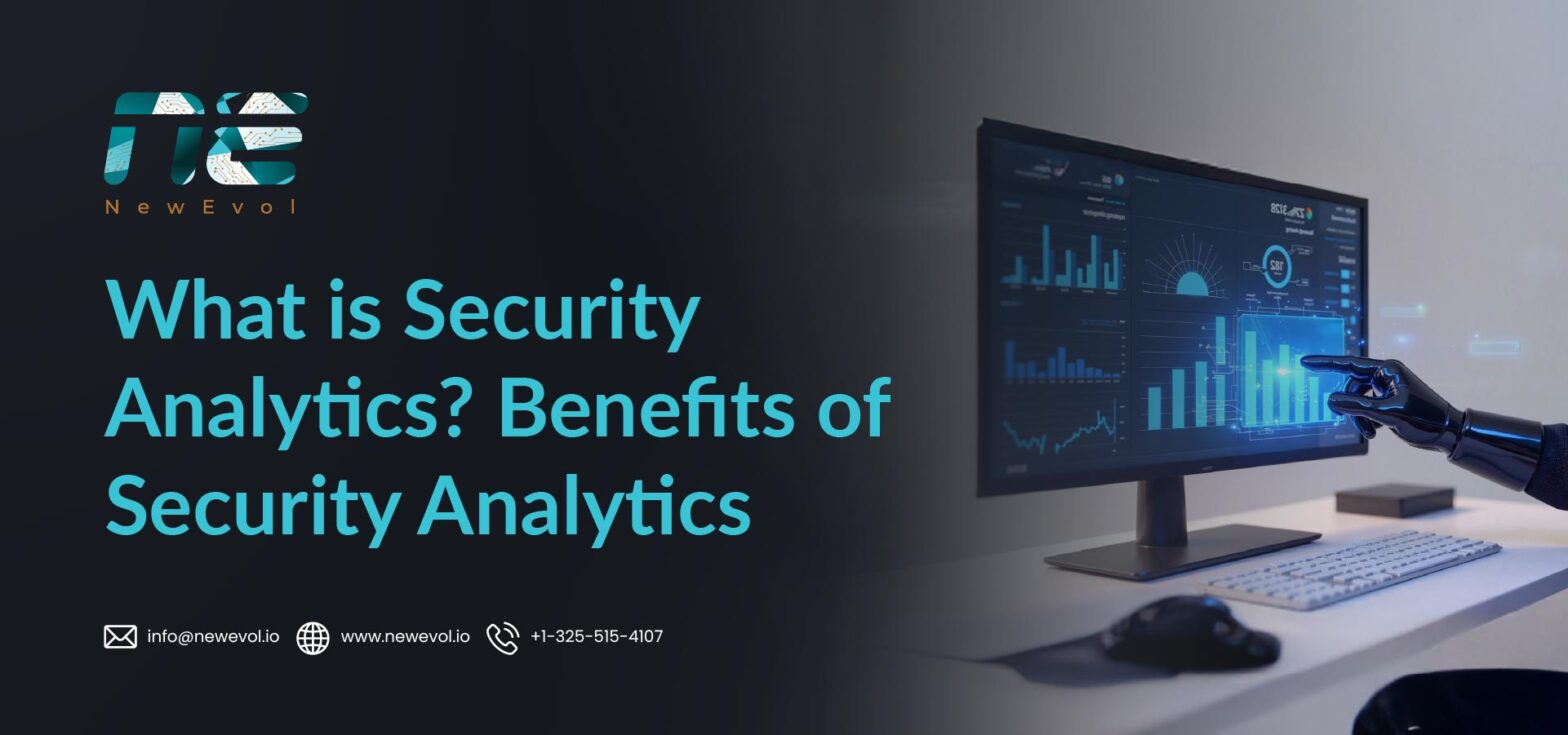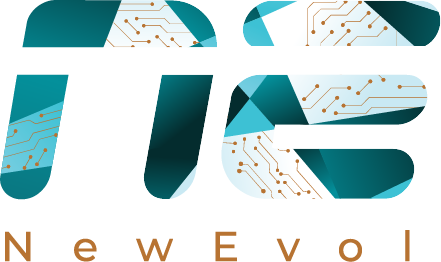What is Security Analytics? Benefits of Security Analytics

Cyberattacks today are more frequent and far harder to detect. Traditional monitoring tools that just collect logs or trigger alerts aren’t enough. Organizations need deeper visibility, analyzing data across endpoints, users, networks, and cloud environments to spot threats early and respond faster.
That’s where security analytics come in. By applying advanced analysis to massive volumes of security data, it uncovers hidden patterns, anomalies, and risks. For U.S. businesses where data breach costs rank among the highest globally faster detection and response isn’t just a technical edge, it’s a financial and compliance necessity.
In this blog, we’ll break down what security analytics really mean, why it matters, and the benefits it brings.
What Is Security Analytics?
Security analytics is the process of collecting, normalizing, and analyzing security data from multiple sources—such as endpoints, user activity, networks, cloud applications, and threat intelligence—to identify threats, suspicious behavior, and potential risks.
Unlike traditional SIEM tools that primarily focus on log aggregation and rule-based alerts, security analytics goes deeper. It uses correlation, behavior analysis, statistical models, and automation to spot anomalies that might indicate insider threats, credential misuse, or advanced attacks.
Think of it as moving from “seeing individual security events” to “understanding the bigger story those events tell.” With the right analytics, organizations can reduce false positives, improve detection speed, and enable faster, more effective responses.
Why It Matters in the U.S.
The United States consistently records the highest cost of data breaches worldwide. According to industry studies, the average breach in the U.S. exceeds $9 million, far above the global average. Healthcare and financial services, two of the country’s most critical sectors—are hit hardest, with breach costs climbing year after year.
Beyond financial impact, U.S. organizations also face strict regulatory pressure. Frameworks such as NIST Cybersecurity Framework (CSF) 2.0, HIPAA, PCI DSS, and SOX all emphasize continuous monitoring, detection, and response. Without robust analytics, proving compliance and generating audit-ready evidence can be time-consuming and error-prone.
Speed is another critical factor. The longer attackers remain undetected, the greater the damage. Metrics like Mean Time to Detect (MTTD) and Mean Time to Respond (MTTR) have become essential benchmarks for security leaders. Security analytics directly helps improve these KPIs, giving teams the ability to move from reactive firefighting to proactive defense.
In short, for U.S. enterprises, security analytics is not just about technology—it’s about reducing financial exposure, staying compliant, and protecting brand trust in one of the most high-risk cybersecurity markets in the world.
How Security Analytics Works (In Practice)
At its core, security analytics is about turning massive amounts of raw security data into actionable insights. The process typically unfolds in four key stages:
1. Data Ingestion
Security analytics begins by gathering data from multiple source endpoints, identity systems (like Active Directory or cloud SSO), network traffic, cloud workloads, applications, and even IoT/OT devices. Threat intelligence feeds are also integrated to add context.
2. Normalization and Enrichment
Once collected, the data is standardized so that different log formats and event types can be compared. Enrichment is then applied—such as mapping IP addresses to geolocations, tagging user identities, or cross-referencing with threat intel—to give security teams more context around each event.
3. Analytics and Detection
This is where the real value happens. Security analytics applies:
- Correlation rules to connect seemingly unrelated events.
- Behavior analysis (UEBA) to detect unusual user or entity activity.
- Statistical models and anomaly detection to spot outliers, such as abnormal login patterns or data transfers.
- Threat intelligence matching to flag known malicious indicators.
4. Triage and Response
Once suspicious activity is detected, security analytics platforms group related alerts into cases, reducing noise. Analysts can then investigate with more clarity. Many modern solutions also integrate automation (SOAR), allowing predefined playbooks to isolate affected endpoints, disable compromised accounts, or notify the right teams automatically.
Core Components & Architecture
A modern security analytics platform is not a single tool, but an ecosystem of connected components working together to deliver visibility, detection, and response on a scale. Its architecture typically includes:
1. Telemetry & Data Platform
At the foundation lies the ability to capture and store data from diverse source endpoints, cloud platforms, applications, identity systems, and network traffic. This often combines a SIEM for real-time correlation with a security data lake for long-term, cost-effective storage and advanced analytics.
2. Analytics Engine
The brain of the system applies detection logic, behavior models, and anomaly detection. It leverages:
- Correlation rules for known attack patterns.
- User and Entity Behavior Analytics (UEBA) to establish baselines and spot deviations.
- Threat intelligence integration to quickly identify known malicious indicators.
- MITRE ATT&CK–aligned detections to map activity to real-world adversary tactics and techniques.
3. Orchestration & Automation Layer
This layer connects analytics with action. Security teams can define automated playbooks for common incidents—such as disabling compromised accounts or isolating devices—reducing response time and manual workload.
-
Visualization & Outcomes Layer
Dashboards, reports, and KPIs (like MTTD, MTTR, and false-positive rate) allow security leaders to measure effectiveness, demonstrate compliance, and communicate risk posture to executives and regulators.
Benefits of Security Analytics (What Leaders Care About)
For CISOs, CIOs, and business leaders, the true value of security analytics lies in measurable outcomes. It’s not just about detecting threats, about reducing risk, proving compliance, and controlling costs. Key benefits include:
Faster Detection and Response
Security analytics significantly reduces Mean Time to Detect (MTTD) and Mean Time to Respond (MTTR). By correlating events and highlighting high-risk anomalies, teams can identify attacks in hours instead of weeks, minimizing damage.
Reduced Breach Costs
Early detection directly lowers the financial impact of breaches. In the U.S., where the average cost of a data breach is over $9 million, even shaving days off detection and response can translate into millions saved.
Stronger Insider Threat and Identity Protection
With User and Entity Behavior Analytics (UEBA), organizations can spot credential misuse, privilege abuse, and insider-driven risks that traditional monitoring often misses.
Lower Alert Fatigue
Instead of drowning analysts in thousands of raw alerts, security analytics consolidates and prioritizes incidents. Context-rich cases and risk scoring mean teams can focus on what truly matters.
Compliance Made Easier
Frameworks like NIST CSF 2.0, HIPAA, PCI DSS, SOX, and CMMC all demand evidence of monitoring and incident response. Security analytics provides audit-ready reports, making compliance less of a burden.
Scalability and Cost Control
By leveraging cloud-native storage and processing, security analytics scales to handle growing data volumes without requiring constant hardware upgrades. This helps organizations control long-term costs while maintaining coverage.
Common Use Cases (with ATT&CK Mapping)
Security analytics isn’t just about monitoring logs—it’s about uncovering specific attacker behaviors and mapping them to real-world tactics. By aligning detections with the MITRE ATT&CK framework, organizations can ensure they’re covering the techniques adversaries use most often. Some practical use cases include:
Compromised Account Detection
- Spotting “impossible travel” logins, abnormal MFA push activity, or access from risky geographies.
- ATT&CK Techniques: Valid Accounts (T1078), Multi-Factor Authentication Request Generation (T1621).
Privilege Escalation & Policy Abuse
- Detecting unusual privilege grants, admin role misuse, or unauthorized changes to security policies.
- ATT&CK Techniques: Privilege Escalation (T1068), Abuse Elevation Control Mechanism (T1548).
Ransomware Precursors
- Identifying suspicious encryption processes, mass file access, or tampering with backup systems—often days before full encryption.
- ATT&CK Techniques: Data Encrypted for Impact (T1486), Inhibit System Recovery (T1490).
Data Exfiltration Patterns
- Monitoring abnormal outbound traffic, unauthorized file transfers to cloud storage, or spikes in data movement at odd hours.
- ATT&CK Techniques: Exfiltration Over Web Services (T1567), Exfiltration Over Alternative Protocol (T1048).
Threat Hunting with Analytics Packs
- Using pre-built analytics aligned with ATT&CK to proactively search for indicators of lateral movement, persistence, or command-and-control activity.
- ATT&CK Techniques: Lateral Movement (T1021), Persistence via Scheduled Task (T1053), Application Layer Protocol for C2 (T1071).
U.S. Regulatory Angle (Quick Guide)
In the U.S., compliance is as big a driver for security analytics as threat detection itself. Multiple federal and industry regulations emphasize continuous monitoring, log retention, and incident response. Security analytics helps organizations meet these requirements by delivering audit-ready evidence and measurable controls.
NIST Cybersecurity Framework (CSF) 2.0
Security analytics directly supports the Detect and Respond functions by enabling anomaly detection, continuous monitoring, and response automation.
HIPAA (Healthcare)
Requires covered entities to monitor system activity and detect unauthorized access to electronic protected health information (ePHI). Security analytics provides the visibility and reporting needed to prove compliance.
PCI DSS (Retail & Payments)
Demands centralized logging, monitoring of cardholder data environments, and rapid alerting on suspicious activity. Analytics platforms streamline log correlation and reporting.
SOX & GLBA (Financial Services)
Require oversight of access to financial systems and data integrity. Security analytics enables traceability, insider threat detection, and clear audit trails.
CMMC (Defense Contractors)
Mandates continuous monitoring and incident response capabilities for defense supply chain companies. Security analytics supports these practices with automated detection and reporting aligned to NIST 800-171.
Metrics That Matter (Scorecard)
Measuring the effectiveness of security analytics isn’t just about detecting threats—it’s about proving value, improving operations, and communicating results to executives and regulators. The following KPIs form the core of a strong scorecard:
Mean Time to Detect (MTTD)
The average time it takes to identify a security incident. Lower MTTD means threats are spotted quickly, reducing attacker dwell time.
Mean Time to Respond (MTTR)
The average time from incident detection to containment or remediation. Security analytics with automation helps drive this number down.
False-Positive Rate
The percentage of alerts investigated that turn out to be non-issues. A lower rate means analysts spend more time on real threats and less on noise.
Detection Coverage (by MITRE ATT&CK Techniques)
Measures how many adversary tactics and techniques your analytics can reliably detect. This provides a benchmark for SOC maturity.
Dwell Time
The length of time attackers remain in the environment before being detected. Reducing dwell time significantly lowers breach costs.
Automated Response Percentage
The proportion of incidents handled through automation (playbooks, SOAR actions) instead of manual intervention. Higher automation translates to faster, more consistent containment.
Compliance Readiness
Tracks whether reporting and monitoring outputs align with frameworks like NIST CSF, HIPAA, PCI DSS, and CMMC—critical for audit confidence.
Implementation Roadmap (Practical, 30/60/90)
Rolling out security analytics doesn’t have to be overwhelming. A phased 30/60/90-day plan helps organizations start small, show quick wins, and build toward full-scale capability.
First 30 Days – Foundation & Quick Wins
- Identify and prioritize the most critical data sources—identity systems (Active Directory, SSO), endpoints, and cloud platforms.
- Establish log ingestion, normalization, and baseline correlation rules.
- Deploy initial detections aligned with common threats (e.g., compromised accounts, ransomware indicators).
- Begin tracking key metrics like MTTD and false positives.
Next 60 Days – Analytics & Automation
- Introduce User and Entity Behavior Analytics (UEBA) to establish behavioral baselines and detect anomalies.
- Configure automation playbooks for common incidents such as disabling compromised accounts or isolating infected devices.
- Build role-based dashboards for SOC analysts and compliance officers.
- Expand detections mapped to MITRE ATT&CK techniques for broader coverage.
By 90 Days – Maturity & Scale
- Integrate additional data sources such as network traffic, OT/IoT devices, and third-party SaaS logs.
- Automate responses for well-understood scenarios to reduce MTTR.
- Generate compliance-ready reports for frameworks like NIST CSF 2.0, HIPAA, and PCI DSS.
- Conduct threat-hunting exercises using pre-built analytics packs to validate coverage.
Build vs. Buy (and Total Cost)
When organizations consider adopting security analytics, one of the biggest questions is whether to build it in-house or adopt a ready platform. Both approaches have trade-offs, and cost isn’t just about licenses—it’s about people, time, and scalability.
Building In-House
- Pros: Full control over architecture, custom use cases, and integrations.
- Cons: Requires significant investment in skilled staff, data engineering, and ongoing maintenance. As data volumes grow, storage and compute costs can escalate quickly. Many SOC teams also struggle to keep pace with rule updates, threat intelligence, and compliance reporting.
Buying a Platform
- Pros: Faster time to value with pre-built analytics, UEBA, ATT&CK-aligned use cases, and compliance reporting already available. Cloud-native platforms scale elastically, reducing infrastructure overhead. Automation and orchestration are built-in, helping cut down MTTR and analyst workload.
- Cons: Less flexibility for highly unique environments, and recurring subscription fees must be factored into budget planning.
Total Cost Considerations
- People Costs: Staffing an in-house analytics program requires data engineers, SIEM admins, content developers, and SOC analysts—often the most expensive line item.
- Technology Costs: Storage tiering (hot/warm/cold), compute power, and third-party integrations can add up quickly in self-managed models.
- Time-to-Value: Building may take 12–18 months before producing mature results, while buying a modern platform can show measurable improvements in MTTD/MTTR within weeks.
- Scalability: Purchased platforms typically offer cloud-native elasticity, while homegrown systems require constant upgrades.
Where NewEvol Fits
NewEvol sits at the intersection of scalability, automation, and compliance, designed for enterprises that want more than just another SIEM.
- Automation at Core – Instead of relying heavily on manual rule-writing, NewEvol automates data correlation, enrichment, and response actions. This reduces analyst fatigue and shortens incident response cycles.
- Compliance-Ready – Out-of-the-box reporting for PCI DSS, HIPAA, SOX, and other U.S. frameworks means less time spent building templates and more time proving adherence during audits.
- Open & Extensible – Integrates with existing SIEMs and security tools rather than forcing a “rip-and-replace” model. Organizations can scale analytics without disrupting prior investments.
- Cost-Optimized – Cloud-native architecture eliminates expensive hardware refreshes and reduces the hidden costs of storage and compute. Customers typically see faster ROI compared to building analytics internally.
- Built for SOC Teams – UEBA, MITRE ATT&CK mapping, and advanced search empower analysts to hunt proactively, while intuitive dashboards keep leadership aligned on risk posture and compliance.
Final Thoughts
Security analytics isn’t optional in the U.S.—it’s a leadership priority. Rising threats, strict regulations, and insurance demands mean reactive defenses no longer cut it. Enterprises that adopt analytics move from noise to clarity, from compliance headaches to measurable outcomes. NewEvol helps leaders get there faster—bringing automation, scalability, and compliance alignment without the high cost of building from scratch. The future belongs to organizations that treat security analytics as a business enabler, not just a technical fix.
FAQs
1. What are the benefits of security analytics?
Security analytics helps organizations detect threats faster, reduce false positives, meet compliance needs, and improve overall security operations.
2. What is security analytics?
Security analytics is the process of collecting, analyzing, and correlating security data to identify patterns, detect threats, and enable faster response.
3. What do you mean by security analysis?
Security analysis refers to examining security-related data—such as logs, network traffic, and user behavior—to uncover risks, vulnerabilities, and potential attacks.
4. What is the primary goal of security analytics?
The main goal is to provide actionable insights that help organizations prevent, detect, and respond to cyber threats in real time.

